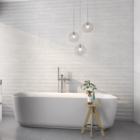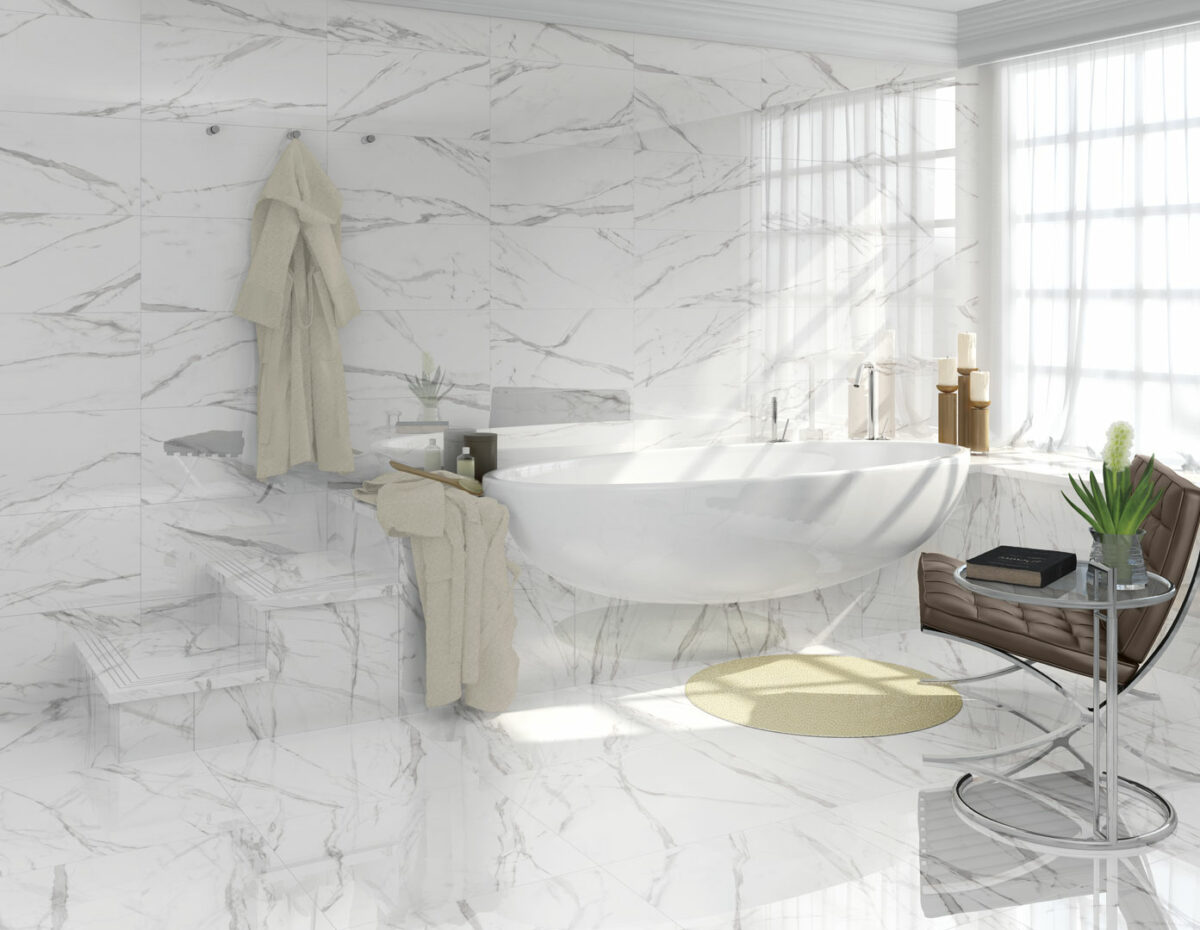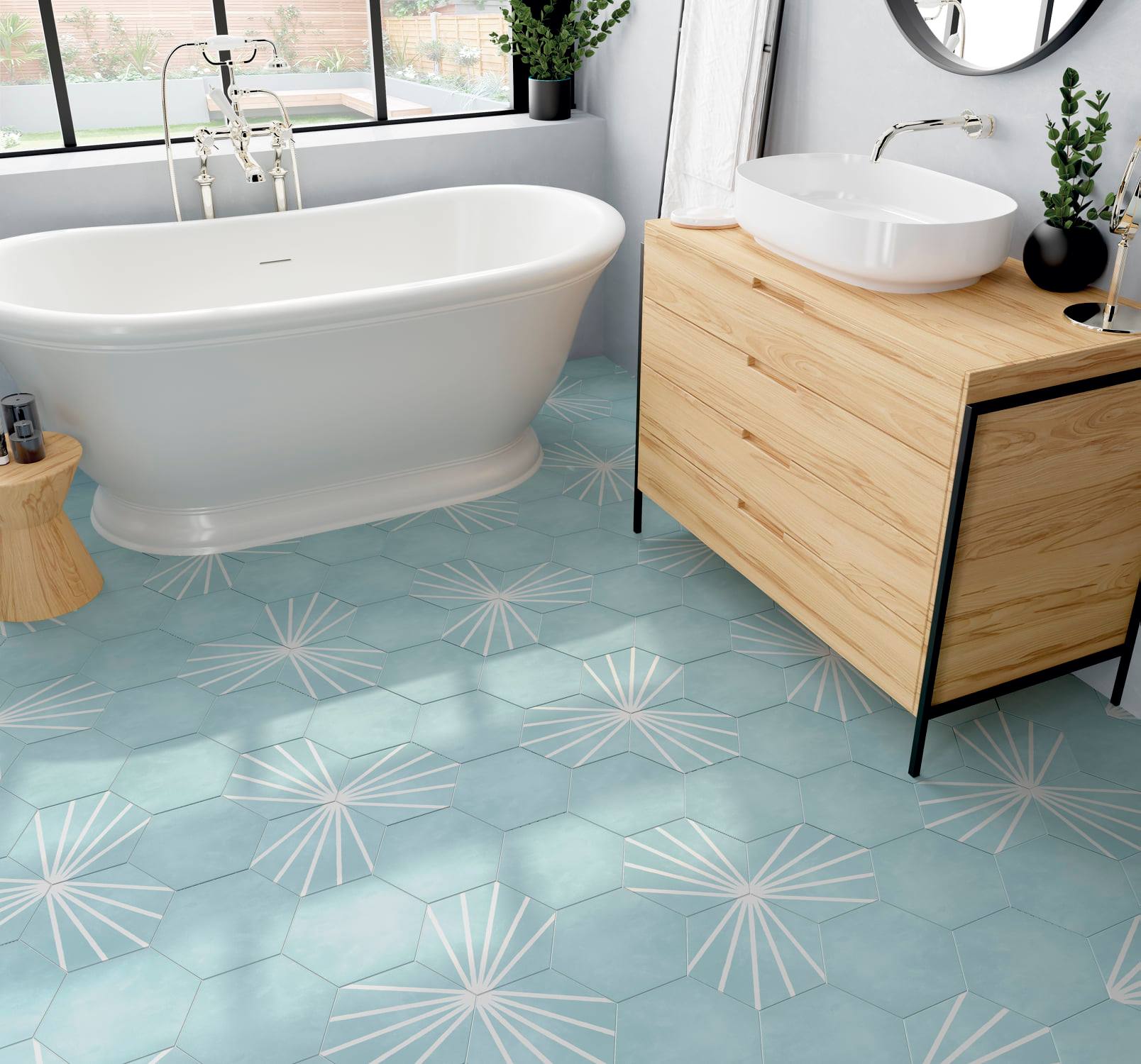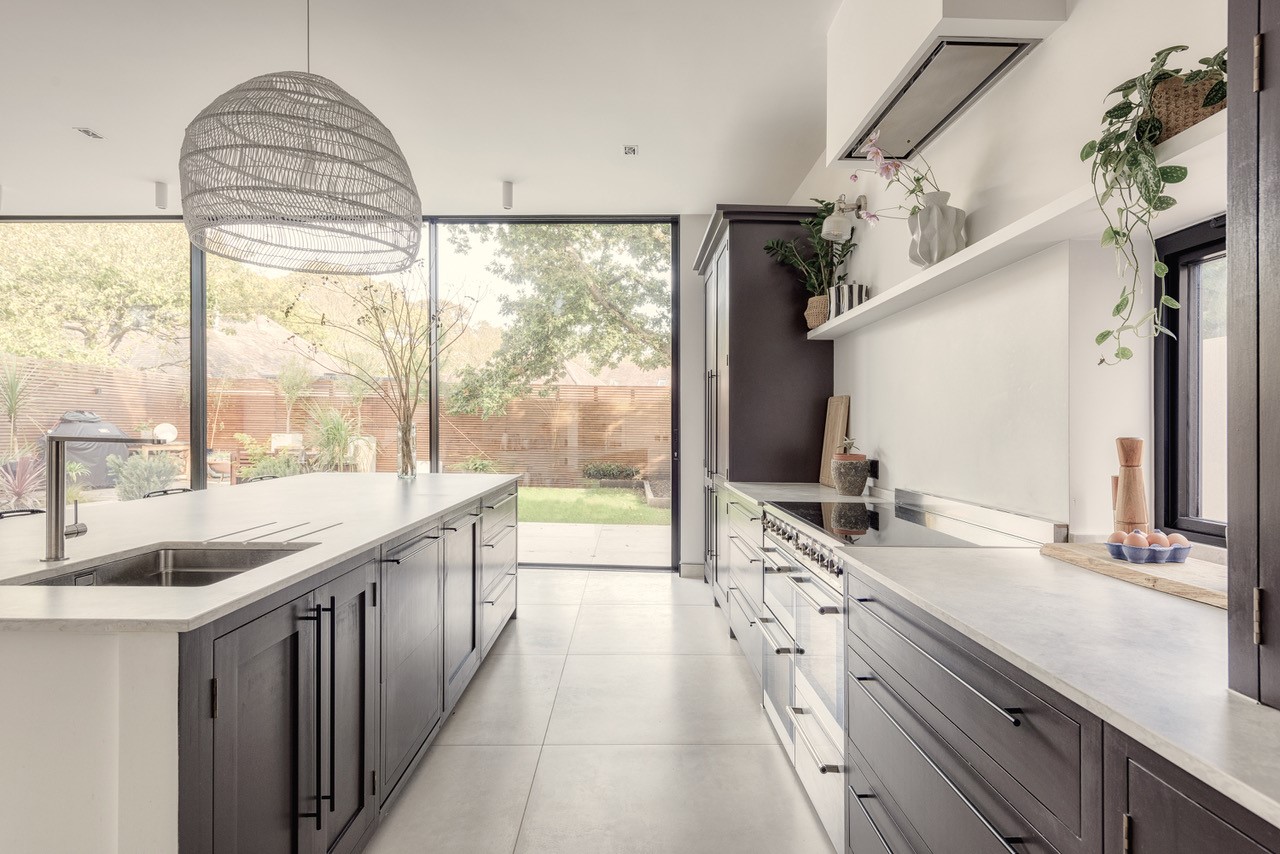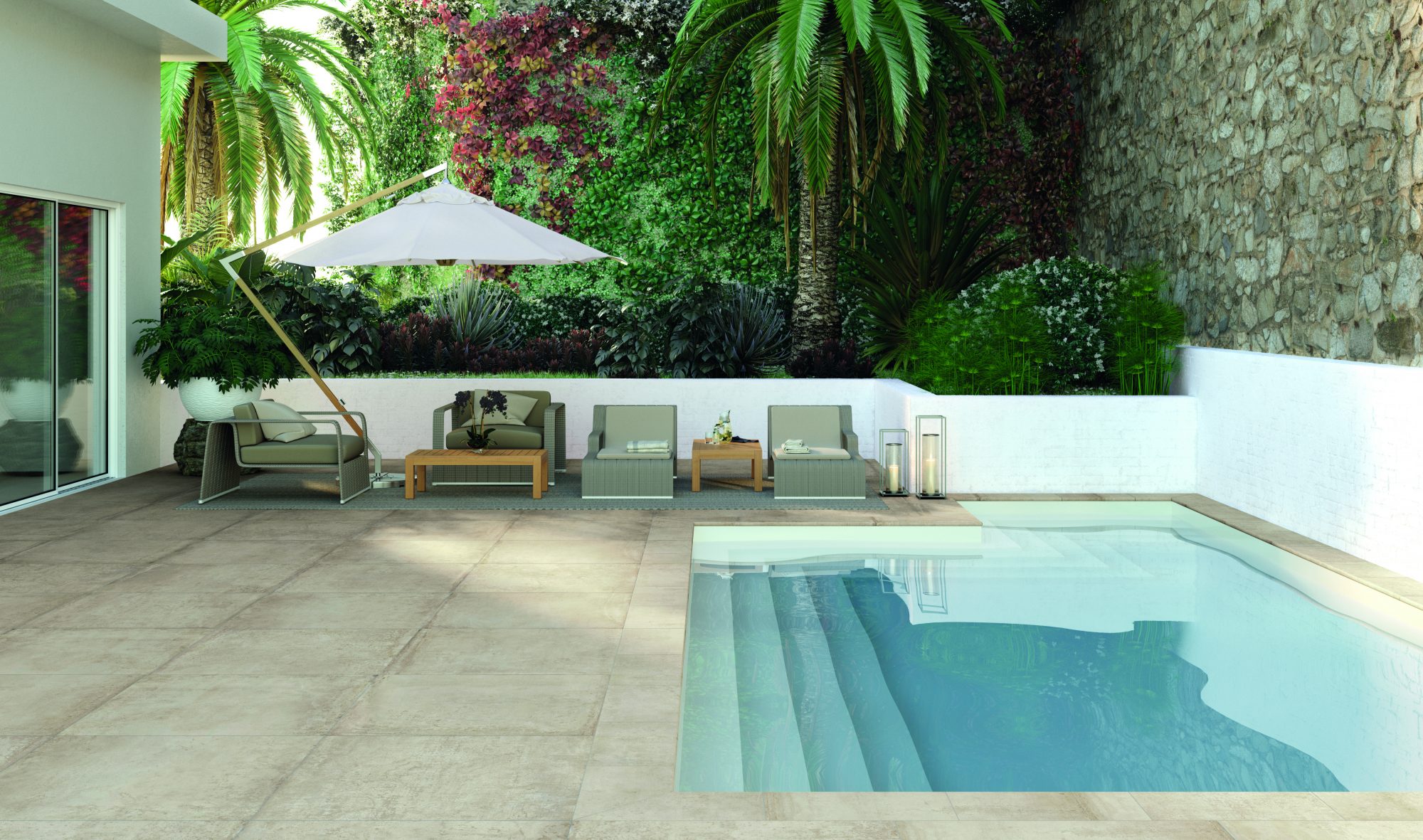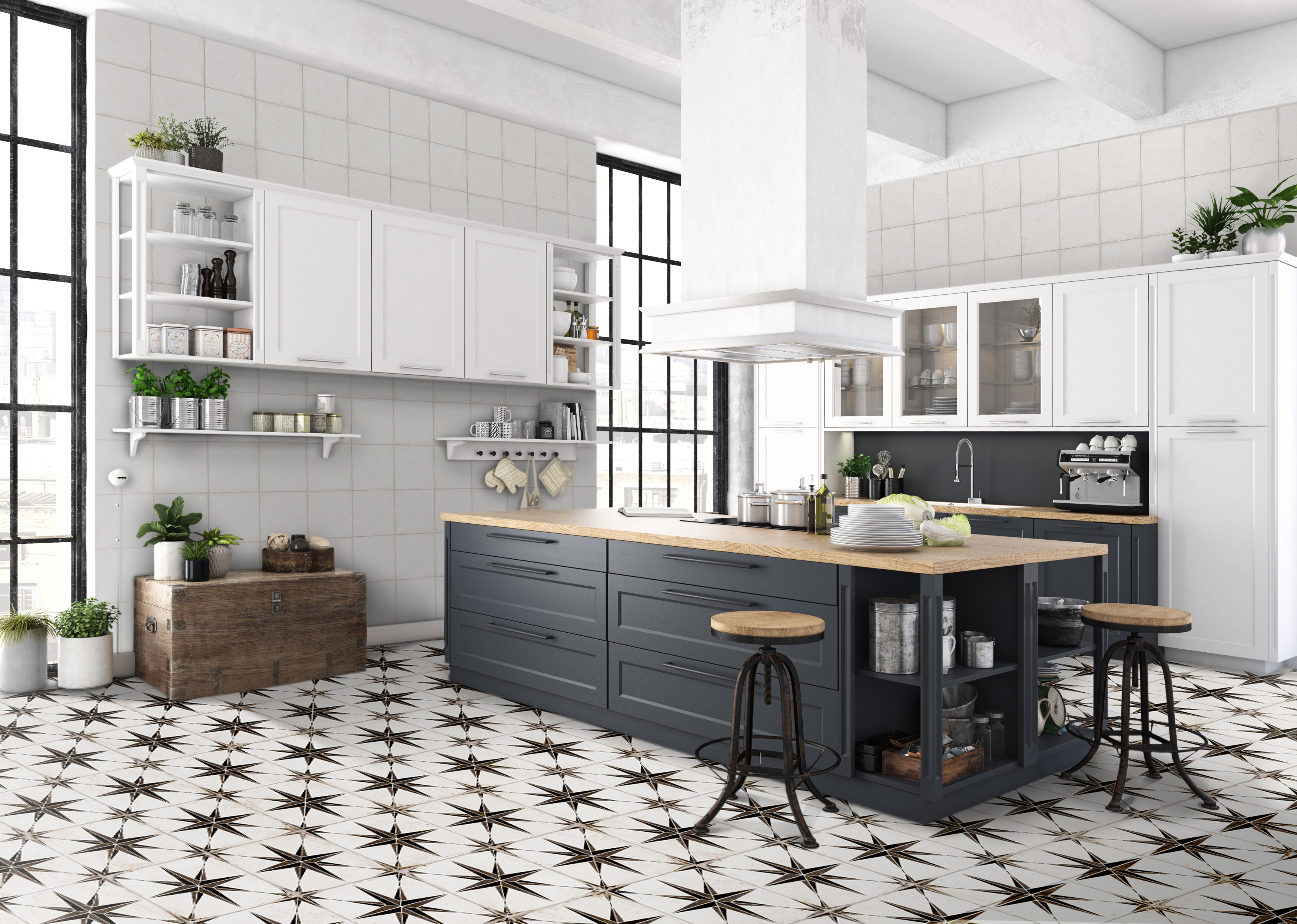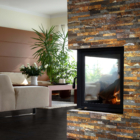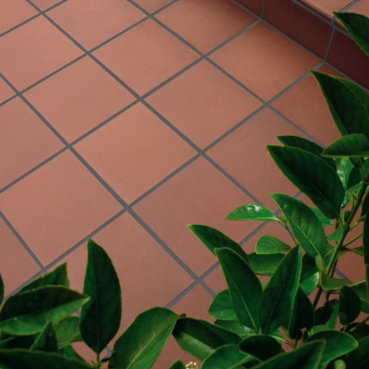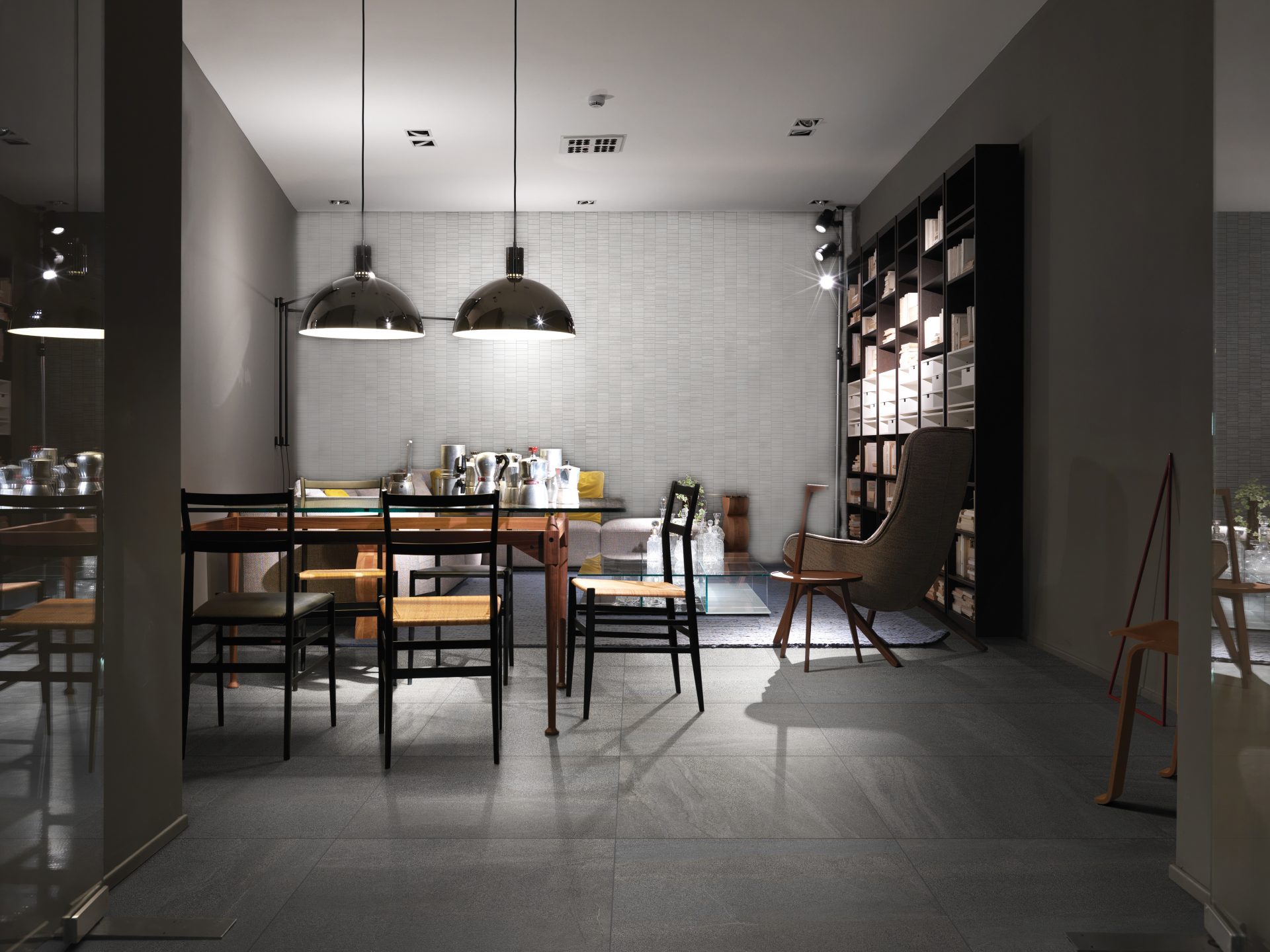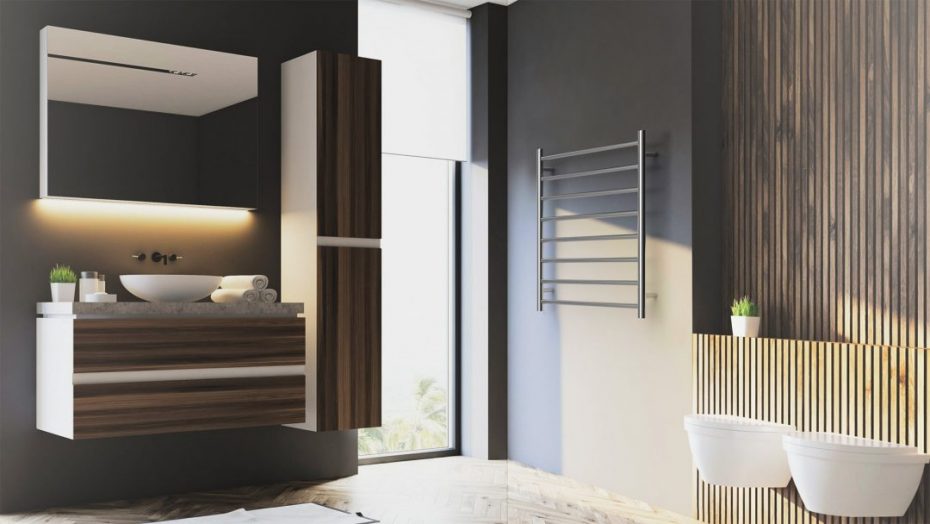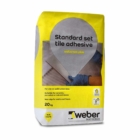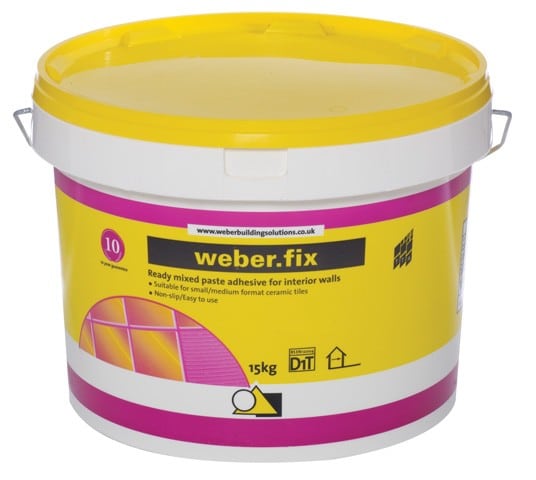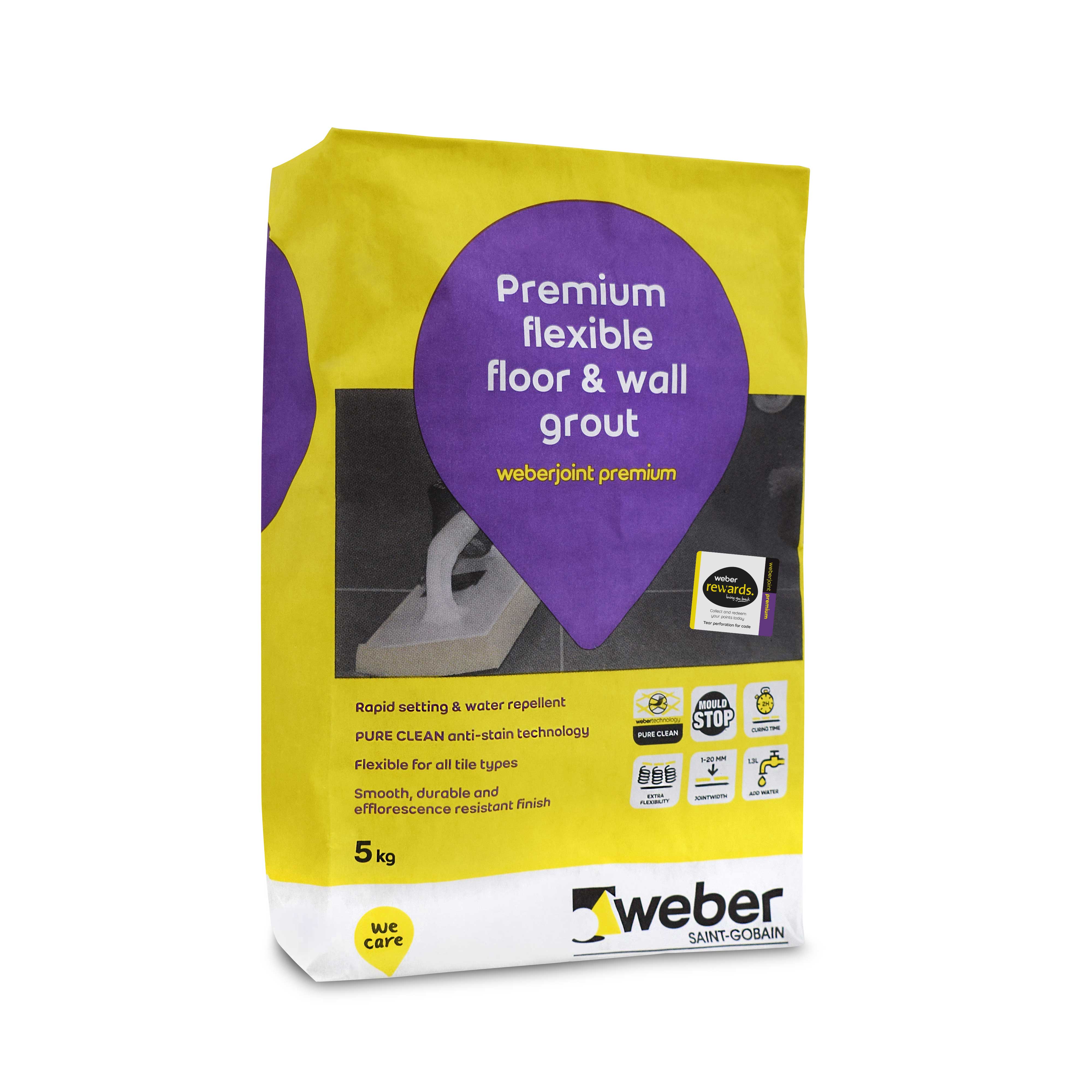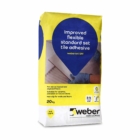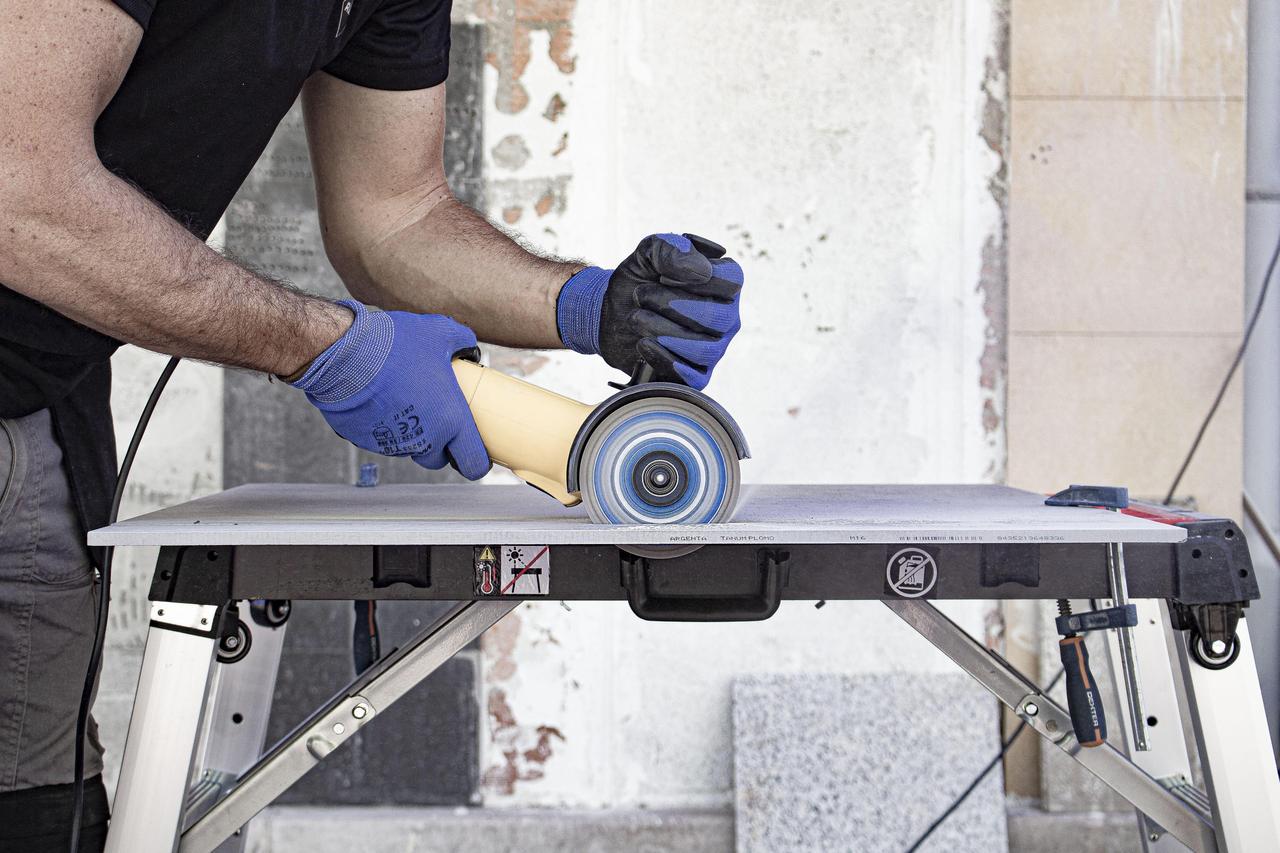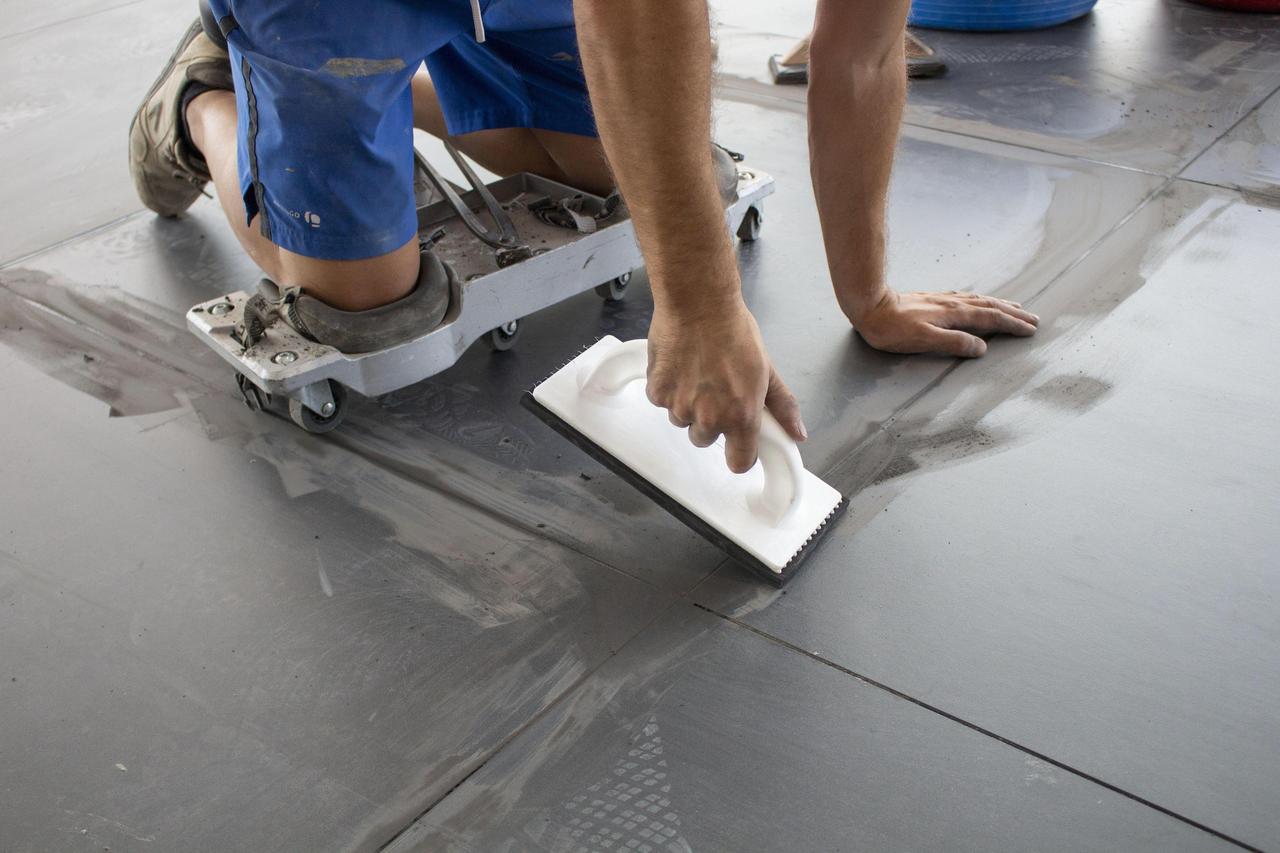What is the difference between ceramic and porcelain tiles?

Porcelain vs Ceramic
Both porcelain and ceramic tiles are made from clay. They therefore have a relatively similar appearance and similar attributes, as compared with something like granite or quartz. That said, there are some distinct differences to keep in mind and it is an error to use the terms interchangeably. Whereas ceramic tiles are made from red, brown, or white clay, porcelain tiles are typically made from white clay, sand, or feldspar.
The biggest difference from a practical standpoint, is how readily the tiles absorb water. Porcelain tiles will absorb under 0.5% of the water that comes into contact with them, but ceramic and non-porcelain tiles absorb more. This is because the clay used to make porcelain tiles is slightly denser, which results in a less porous final result.
As you might imagine, this means that porcelain tiles are also more resilient and will last longer before they need replacing. What’s more, is that ceramic can occasionally crack in cold weather, this is because small amounts of water can get absorbed which then expand when they freeze, thereby breaking open the porcelain texture as they grow.
For this reason, porcelain is often considered more suitable for bathroom floors where moisture is high. The same is true for colder regions. It is also popular in commercial properties, hotels, and rentals. In a wetroom or sauna, this type of tile would almost be considered a requirement.
Porcelain tiles are also sometimes used in exterior locations, which is not an option for ceramic tiles.
When to Choose Ceramic
So should you always get porcelain for every job? Not necessarily! There are still a few benefits to choosing ceramic instead.
For one, ceramic is generally easier to use, and comes in a wider variety of different colours. Ceramic also tends to enjoy a greater variety of patterns and attractive details. It’s also often more affordable, and is easier to cut and shape – creating more design options.
The slightly softer material of tiles also means they can sometimes feel a little less cold underfoot, and might be somewhat more forgiving if you should slip and fall on them.
Closing Comments: Knowing What’s Right For You
Simply put then, there are horses for courses and the best type of tile is going to depend very much on your intended use and setting. For areas that see extremely high foot fall, lots of moisture, and harsh weather, choose porcelain. For situations where you want to save money and go for something a little more decorative… choose ceramic!
Either way, tiling is always an excellent choice for your interior design and will result in some great looking decors that are long lasting and easy to maintain!
.jpg)
.jpg)
The main ingredient in the composition of a porcelain tile is finely-ground sand which means the processing involves great pressure and extremely high temperatures. This in return gives a very dense, glass-like material, providing superior chip resistance and a very durable tile which can tolerate sub zero temperatures. This important quality makes it an ideal solution for patios, conservatories, swimming pools and hard landscaping in cold climates. Because of its density and composition of natural ingredients, porcelain tiles have all the same excellent qualities of glazed ceramic.
Ceramic vs Porcelain, the positive and negatives always tend to offset each other.
For example, Porcelain is a denser and stronger material than its ceramic counterpart so it would make sense to go for porcelain, but the hardness of the tile makes installing it that little bit harder and generally requires specialist tools for cutting and shaping. The average DIY person typically wouldn’t have these tools or enough experience to use if rented or purchased.
So which way do you go? The bottom line is, you can’t go wrong either way. Both ceramic and porcelain tiles come in a range of costs to suit all budgets, both durable, hardwearing and a superb material to create the perfect look. The biggest problem you’ll have is deciding which size, colour and texture will suit your needs.
Article by Mike Lovatt
Here at Atlas Ceramics we import and distribute high quality products to support the tiling industry. These products include Polished tiles, Matt tiles or Satin tiles for the wall and floor, ceramic and porcelain tiles, natural stone and mosaics, from Italy, Portugal, and Spain.


